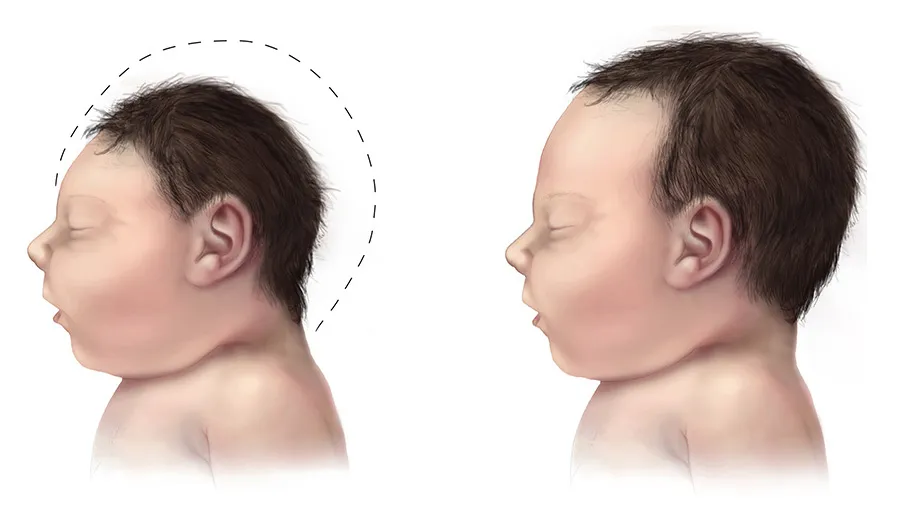I’m Dr. Michael Nwaneri, a board-certified pediatrician and obesity medicine specialist, and this blog post aims to serve as a comprehensive guide to understanding hernias in children. The word “hernia” can be unnerving for parents, conjuring images of complicated surgeries and long recovery periods. However, understanding this medical condition is crucial for ensuring optimal health outcomes for your child. It will delve into what hernias are, their causes, symptoms, diagnostic methods, treatment options, and preventive measures.
What is a Hernia?
A hernia occurs when an organ or tissue bulges through an abnormal opening in the body. While hernias can happen at any age, certain types are more common in children.
Unpacking the Causes: What Triggers Hernias?
- Congenital Factors: Some children are born with weakened muscle tissues, making them more susceptible to hernias.
- Physical Strain: Lifting heavy objects, intense crying, or chronic constipation can contribute to hernia development.
- Underlying Medical Conditions: Conditions that cause prolonged coughing or straining can also lead to hernias.
The Different Types of Hernias in Children
Inguinal Hernia
Common in both boys and girls, these occur in the groin area and are more prevalent in premature infants.
Umbilical Hernia
These hernias are noticeable near the belly button and are more common in infants of African descent.
Hiatal Hernia
These are less common in children and occur when the stomach pushes through the diaphragm into the chest cavity.
Recognizing the Symptoms: What to Watch For
- Visible Lump: The most obvious sign, usually more noticeable when the child cries or strains.
- Discomfort or Pain: Especially in the area around the lump.
- Swelling and Redness: Indicative of a strangulated hernia, which is a medical emergency.

The Diagnostic Process: Beyond the Visible
- Physical Examination: This usually involves palpating the affected area.
- Ultrasound or MRI: Used for more elusive cases or to confirm the diagnosis.
- Laboratory Tests: Blood tests may be performed if an infection is suspected.
Treatment Options: From Monitoring to Surgery
Non-Surgical Management
- Observation: Small, asymptomatic hernias may simply be monitored.
- Hernia Trusses: These are supportive undergarments, but they are generally not recommended for children.
Surgical Options
- Open Hernia Repair: A traditional method involving a single large incision.
- Laparoscopic Repair: Involves multiple small incisions and a camera to guide the surgeon.
Post-Operative Care and Recovery
- Pain Management: Mild pain is common and usually managed with over-the-counter medications.
- Activity Restrictions: Limited physical activity for a specified period.
Proactive Prevention: Steps to Minimize Risk
- Healthy Weight: Obesity can put extra pressure on the abdominal wall.
- Regular Exercise: To strengthen the abdominal muscles.

Dietary Considerations: Fueling Hernia Prevention
A balanced and nutritious diet plays a crucial role in maintaining overall health, including the strength of muscles and connective tissues. While specific dietary factors may not directly cause or prevent hernias, a diet rich in essential nutrients contributes to the overall well-being of the body. Adequate intake of vitamins, minerals, and proteins supports muscle function and can potentially reduce the risk of hernia development.
Key Nutrients for Muscle Health
- Protein: Protein is a fundamental building block for muscles. Including lean protein sources such as poultry, fish, beans, and tofu in a child’s diet can aid in muscle repair and growth, potentially minimizing the risk of weakened muscle tissues that may predispose them to hernias.
- Vitamins: Certain vitamins play a crucial role in maintaining muscle health. Vitamin D, for instance, supports calcium absorption, contributing to bone and muscle strength. Foods like fortified dairy products, eggs, and fatty fish are excellent sources of vitamin D. Ensuring a well-rounded intake of vitamins, including A, C, and E, supports the body’s overall resilience.
Hydration and Fiber: Maintaining Digestive Health
- Adequate Hydration: Proper hydration is essential for overall health, and it plays a role in maintaining regular bowel movements. Chronic constipation, a potential contributor to hernia development, can be mitigated by ensuring children drink enough water throughout the day.
- Fiber-Rich Foods: A diet high in fiber promotes healthy digestion and can prevent constipation. Fruits, vegetables, whole grains, and legumes are excellent sources of dietary fiber. Encouraging a fiber-rich diet helps in maintaining bowel regularity and reducing the strain during bowel movements.
Lifestyle Modifications: Creating Hernia-Resistant Habits
Proper Lifting Techniques
Educating children on proper lifting techniques is crucial in preventing hernias caused by physical strain. Emphasize the importance of bending at the knees, keeping the back straight, and distributing the weight evenly when lifting heavy objects. Implementing these habits from a young age fosters a foundation for a healthy musculoskeletal system.
Posture Awareness
Encouraging good posture in children is more than a matter of etiquette—it contributes to the overall health of their musculoskeletal system. Maintaining a straight spine and proper alignment reduces unnecessary stress on muscles and can potentially lower the risk of hernia development.
The Role of Physical Activity: Striking a Balance
While regular exercise is advocated for strengthening abdominal muscles, it is essential to strike a balance and avoid excessive strain. Engaging children in age-appropriate physical activities, such as sports and play, helps build a strong foundation of muscle strength without subjecting them to unnecessary physical stress.
Incorporating Routine Check-ups: Early Detection and Intervention
Regular medical check-ups play a pivotal role in identifying any potential risk factors or early signs of hernias. Pediatricians can monitor a child’s growth and development, conducting thorough examinations to detect subtle symptoms or risk factors that might otherwise go unnoticed.
In the subsequent sections, we delve into the nuanced aspects of dietary considerations, lifestyle modifications, and the role of physical activity in preventing hernias. Understanding these multifaceted aspects provides a comprehensive approach to reducing the risk of hernia development in children.
Conclusion: Knowledge is the First Step to Wellness
Understanding hernias and their implications can demystify the condition and guide effective treatment. While surgery might be an unsettling thought, advancements in medical science make hernia repair safer and more effective than ever.
References
- American Academy of Pediatrics – Hernias in Children
- Mayo Clinic – Pediatric Hernia
- National Institutes of Health – Hernia Repair in Children
Disclaimer: This article is for educational purposes and should not replace professional medical advice.




